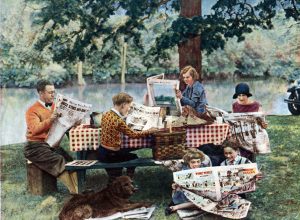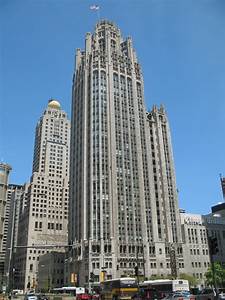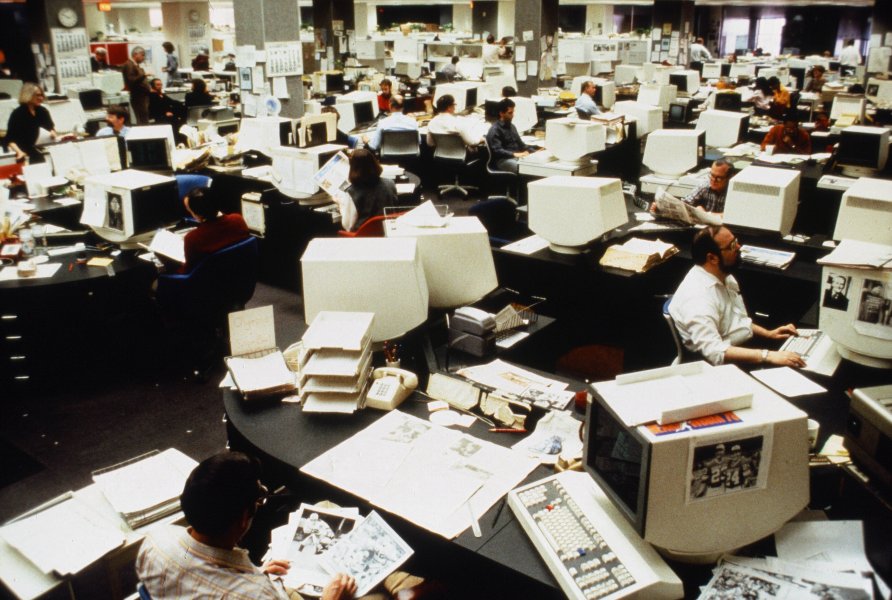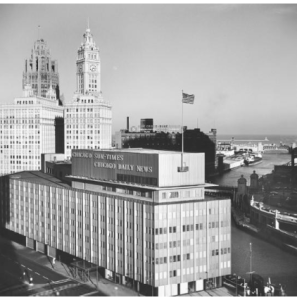There are only a few places outside of my actual home that I ever felt I could call “home.”
One was the U.S. Army Security Agency, where I spent almost four years on active duty. Another was the University of Kansas, where I earned a bachelor’s degree in journalism.
However, perhaps the most significant of these ersatz “homes” was the Chicago Tribune, where I spent almost 28 years as a reporter and foreign correspondent covering turmoil and war from Asia to Latin America and a few other places on the planet.
So naturally, I am concerned when I hear that my “Tribune home” is about to be gobbled up by the Alden Global Capital hedge fund. Alden, which already owns nearly one-third of Tribune Company, stands to take full control of the Chicago Tribune, Baltimore Sun, the New York Daily News, the Orlando Sentinel, and a half-dozen other Tribune papers by June 30 in a deal worth roughly $630 million.
Why does that concern me? The Tribune, which was founded in 1847 and has a storied journalism past, may not survive the Alden seizure. Hedge funds are notorious for acquiring newspapers, sacking staff, selling off everything of value, wringing them dry of cash, and then depositing them on the journalistic scrap heap.
As with a plethora of other American newspapers, the Tribune has watched powerlessly as the collapse of print advertising eroded its revenues. That has made legacy newspapers sitting ducks for vulture investors like Alden.
The Tribune is not alone in this precarious place.

The newspaper industry has struggled during the digital age as revenues dwindled because of a precipitous and persistent decline in print advertising.
In the past two decades, publishers have shut down more than 2,000 newspapers. Newsroom employees shrank by more than half — from 71,000 to 35,000 — between 2008 and 2019, according to the Pew Research Center.
Even though millions of newspaper readers have migrated to digital editions, that has not offset the considerable loss of once-lucrative print advertising.
Last year, Tribune Publishing’s employment fell by 30%, dropping from 4,114 employees at the end of 2019 to 2,865 employees at the end of 2020, according to the company’s annual reports.
The writing was on the wall for the once influential and financially robust Chicago Tribune when, five years ago, it sold the iconic Tribune Tower for $240 million and moved to a much less imposing abode.

Constructed in 1925, the 35-story Gothic tower was an iconic fixture on the northern edge of Chicago’s “Magnificent Mile” at 435 North Michigan Avenue.
I can recall my heart hammering when I entered the Tribune Tower’s cavernous lobby on my first day as a general assignment reporter in July 1969. I had been hired just days after my graduation from the University of Kansas—an unheard-of opportunity the Tribune seldom granted newly-minted journalism school graduates.
Naturally, I was determined to show everybody that I belonged in this epitome of renowned and legendary Chicago “newspaperdom.”
But when I got out of the elevator on the fourth floor and entered the Tribune’s yawning newsroom, I was (input an appropriate adjective here) overwhelmed, stupefied, staggered, dumbfounded, flummoxed.
If the lobby was daunting, the Tribune’s newsroom was even more intimidating and overwhelming.
The place was humungous. It was also louder than the “clatter wheels of hell,” as my grandpa used to say. Telephones were ringing, people were yelling, typewriters were clacking, telex machines were dinging and clattering, copy boys and girls were scurrying, and above it all, I could hear my heart pounding like a bass drum in my ears.

God, what have I gotten myself into? I wondered.
Of course, I didn’t start my life at the Tribune in that outsized grotto of the fourth estate. No, not by a long shot. Instead, I was assigned, as were all rookie reporters in those days, to something called “Neighborhood News” off in a much quieter and less imposing area of the tower.
But nine months later, after I proved that I could write intelligible and accurate stories about the lesser regions of the Chicago Metropolitan area, I was hurled into the reportorial breach of the city room and found myself ensconced at an ancient battleship gray wooden desk that was shared by several other nomadic reporters.
In those days, new general assignment reporters “hot-desked it,” meaning you sat at a vacant desk as long as some old-timer sporting a fedora and smoking a big stogie didn’t tell you to move.
Yes, boys and girls, back then, the Tribune newsroom was saturated with cigarette and cigar smoke. Hell, some crusty old copy editors wearing green eyeshades even had spittoons next to their chairs.

And sometimes the drawers on those old wooden desks contained half-full bottles of (gasp!) Old Grandad or Wild Turkey.
Ah, yes, it was a very different time.
But I digress. In front of me on that scuffed and gouged wooden desk sat a big black Underwood typewriter. I was sure the damned thing was just daring me to write something on it.
I could almost hear it shouting with a distinctive Chicago inflection, “Go ahead, ya big Kansas hick. Write somethin.’ I dare ya! I double dare ya!”
I’m sure I gulped several times, watching the turbulent activity in front of me with reporters running in and out of the newsroom amid a discordant cacophony of bellowing editors and tolling telephones.
I wondered how long before I would be one of those reporters. My heart thumped. My palms sweated. My mouth parched.
I didn’t have to wait long. From about thirty feet across the room, I heard somebody shouting my name.
“Yates, Yates,” the voice said.
I jumped to attention, just like I did on my first day of basic training in the U.S. Army, when a rock-solid staff sergeant with a tan campaign hat covering his square, close-cropped head called my name.
Only this voice didn’t come from my drill sergeant. It emanated from a bespectacled man in shirtsleeves sitting in the driver’s seat of the Tribune’s horseshoe-shaped City Desk. He was flanked on both sides by a squad of rewrite men (not many women back then), a photo assignment editor and a bank of squawking radios blaring raspy police and fire department calls. A couple of the grizzled rewrite men even wore (you guessed it!) green eyeshades and garters on their shirtsleeves.
The man impatiently calling my name was the Chicago Tribune’s Day City Editor. His name was Don Agrella.
I looked over at him just in time to hear him say. “Yates, take an obit.” I looked down at the black telephone on my desk just as it started ringing.
An obit? I found myself thinking. Geez, what a start!
“Hello,” the voice on the other end said, “this is Weinstein’s Funeral Home on West Devon. Are you ready for me?”
“No, I’m not dead yet,” I quipped.
The voice on the other end of the phone wasn’t amused.
“Okay, NOW are you quite ready?”
“Sorry. It’s my first day.”
I looked around the newsroom. No one was paying attention. I was relieved. But I was also thankful to be even a tiny cog in that enormous, churning throng of reportorial humanity.
By the end of the day, after writing, I don’t know how many obits and three-paragraph stories that Tribune editors enigmatically referred to as “four-heads,” I was sure I would earn my journalistic spurs in Tribune Tower.
Today, I can’t imagine working as a Tribune reporter in any place BUT Tribune Tower. But that is not the case today. First, the newspaper moved out of the Tribune building in 2018 and into the Prudential Building across the Chicago River. Then, in January 2021, The Tribune moved once again—this time into the paper’s Freedom Center printing plant at 777 W. Chicago Ave.
That means neither of Chicago’s two remaining major dailies has newsrooms in the city’s immediate downtown area. The Chicago Sun-Times, which had been at 350 N. Orleans St., relocated to 30 N. Racine Ave. on the Near West Side in 2017.

Things could be worse, I guess.
Chicago could become the first large American city not to have a single newspaper covering it.
That’s an unthinkable prospect when you consider that at one point in the early 20th century, there were ten competing newspapers in Chicago.
Oh well, as the ancient Romans used to say:
“Omnia mutantur, nos et mutamur in illis.” (“All things are changed, and we are changed with them.”)
Of course, that doesn’t mean all change is good or even desirable.
–30–
If you enjoyed this post, please consider subscribing to ForeignCorrespondent and tell your friends to subscribe. IT’S FREE! WHAT A DEAL! If you’ve received this from a friend and would like to be added to our distribution list for future blog posts, please enter your email address in the sign-up for notifications box at https://ronaldyatesbooks.com/category/foreign-correspondent.
You can also find my commentaries on Substack at https://ronyates.substack.com/ and the American Free News Network at https://afnn.us.
Please feel free to comment. WE LOVE COMMENTS!

